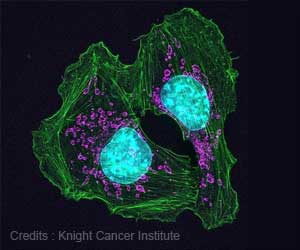As melanoma develops, the cells that are eventually reprogrammed, lose their differentiated features and become invasive, migratory cancer cells.

‘The identification of the cancer cell of origin has important clinical implications, as it enables doctors to detect malignancies earlier and predict tumor behavior more accurately.’





Although cutaneous melanoma is common and often fatal, the precise cellular origin of this malignant cancer has been under debate for quite some time. Prof. Marine and his team generated a refined mouse model that faithfully reproduces the early stages of melanoma development in humans. The researchers used single-cell tracking and profiling approaches and live imaging techniques to identify the earliest cellular origin of melanoma and monitor the changes that these cells experience as they first become malignant and then transform into invasive cancer cells. Pigmented melanocytes identified as cancerous culprits
Mature melanocytes, which produce pigments in the upper layer of the skin, contribute to melanoma formation. These highly specialized cells, which normally do not divide, did divide when exposed to a specific melanoma-causing mutation. The researchers observed them covering the entire topmost layer of the skin and forming benign lesions before changing their appearance. The cells progressively lost the characteristics that make them melanocytes. At that point, they began invading deeper skin layers as migratory and invasive cancer cells.
Prof. Jean-Christophe Marine (VIB-KU Leuven): "Unexpectedly, this ability to divide and contribute to melanoma development contrasted with the activities of other cell populations, such as melanocyte stem cells found in hair follicles, for instance. Because these other skin cell types showed no signs of expansion or transformation, our analysis highlights pigment-producing cells as the originators of melanoma."
Microenvironmental cues play a role
Advertisement
Prof. Jean-Christophe Marine (VIB-KU Leuven): "Importantly, our work also provides clear evidence that non-dividing, differentiated cells with highly specialized functions can be genetically reprogrammed later in life to become cancer-causing cells."
Advertisement
There is clear evidence that thin, early-stage melanomas have better prognoses, since surgical removal at this stage is extremely effective. The identification of the cancer cell of origin has important clinical implications, as it enables doctors to detect malignancies earlier and predict tumor behavior more accurately.
Source-Eurekalert












